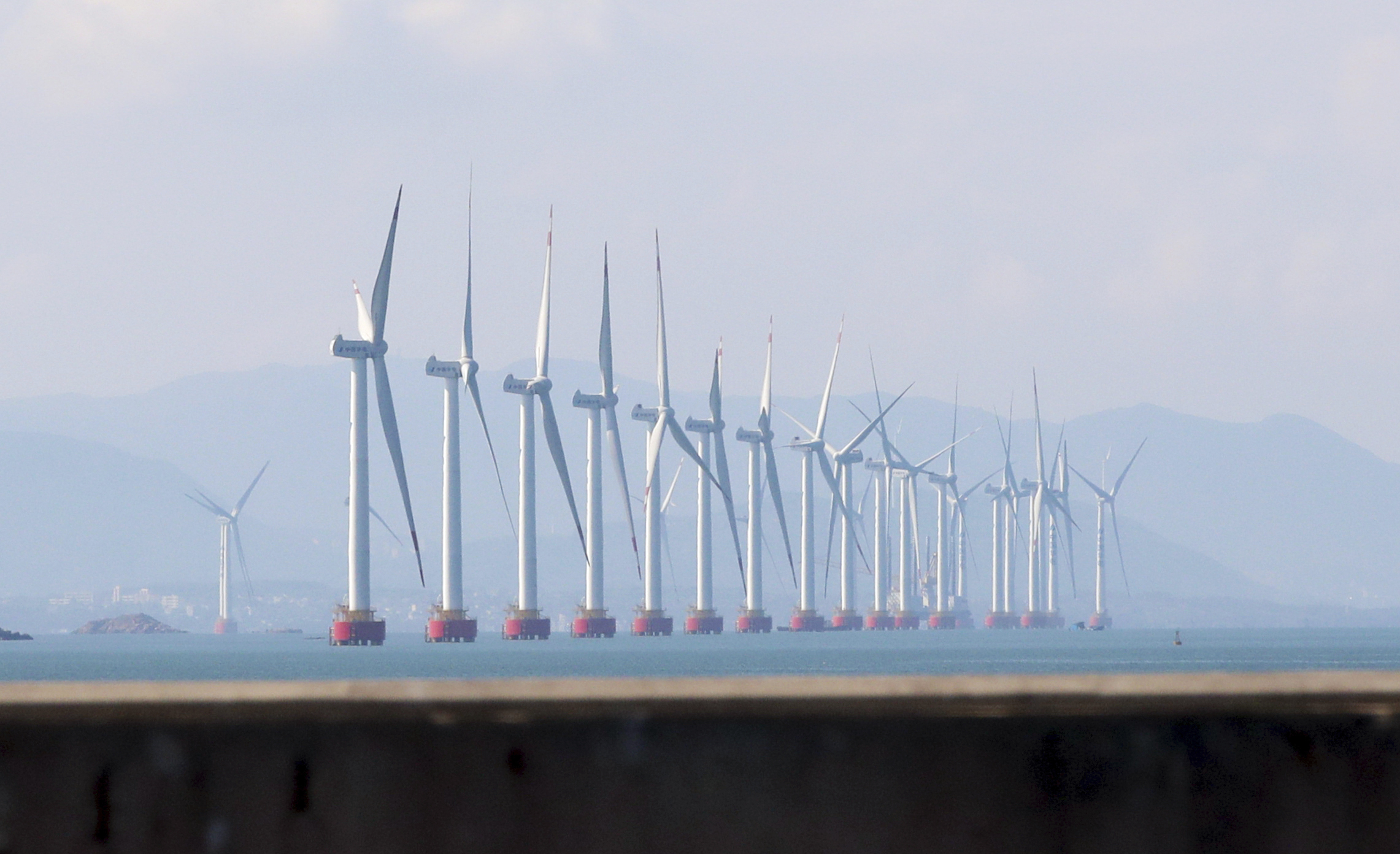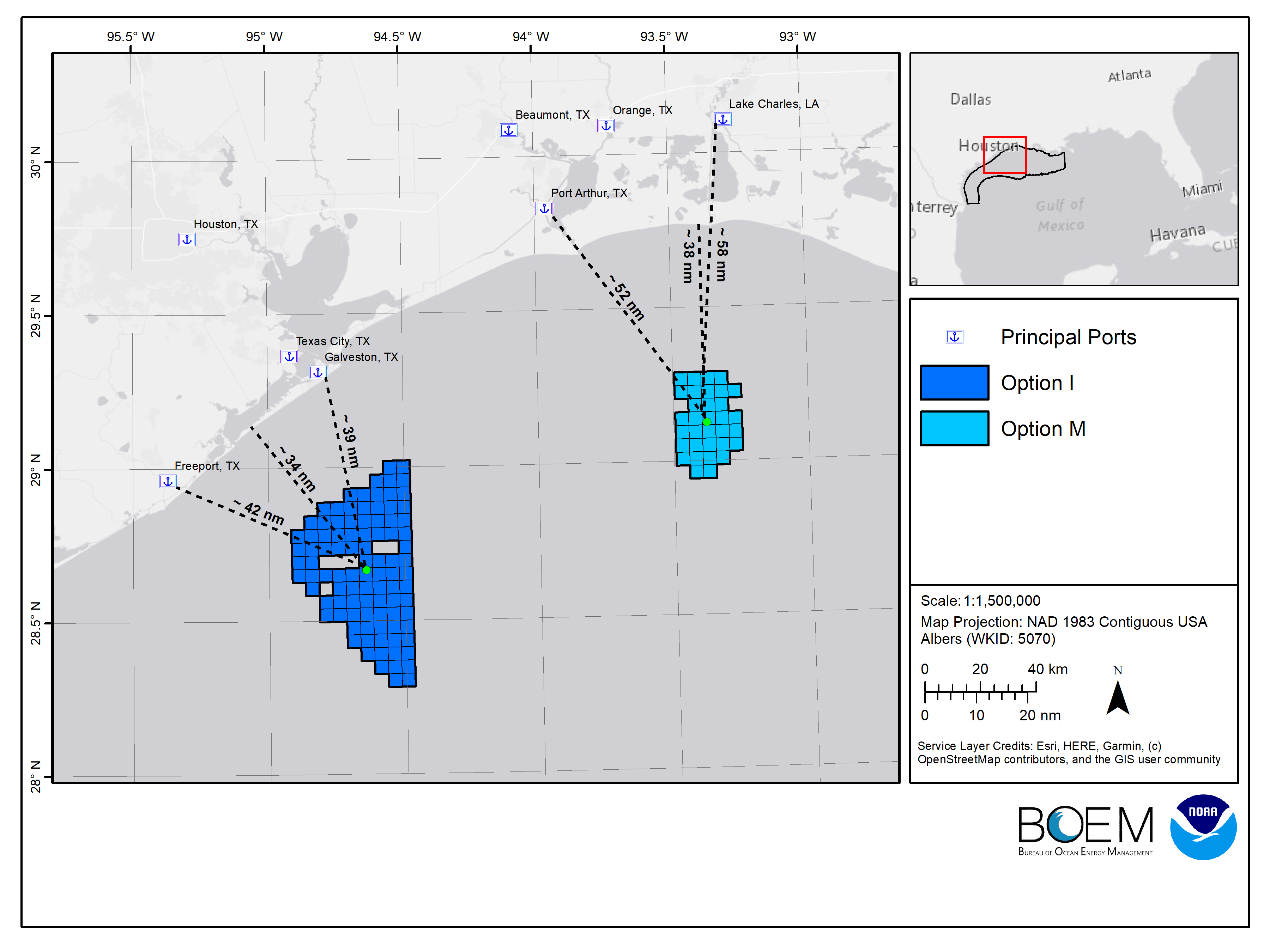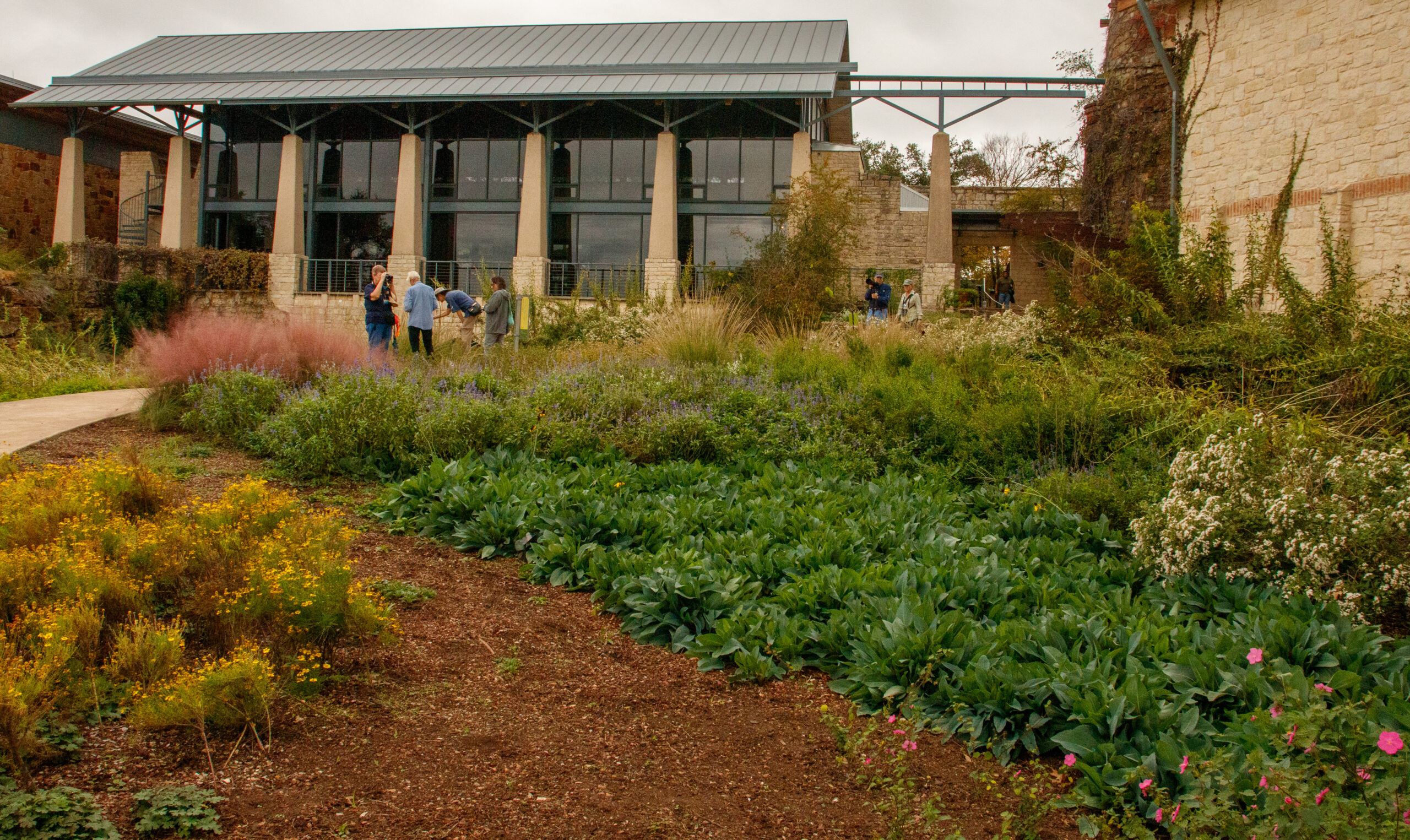
Wind Capital in the Gulf
Upcoming offshore wind farms in the Gulf of Mexico could bring jobs as well as clean energy to Texas communities.

President Biden is currently dangling a tantalizing clean energy opportunity in front of the Gulf Coast, one that seems tailor-made for Texas to seize. Last month, he announced that 700,000 acres of federal waters in the Gulf of Mexico should soon be available to lease for offshore wind development. With Louisiana already gunning for the leases, it’s unclear how much enthusiasm Texas officials have for the opportunity, or whether these projects would connect to ERCOT versus the larger electric grid serving the eastern United States.
At public meetings this week organized by the federal Bureau of Ocean Energy Management (BOEM), which is overseeing the process, the region’s climate advocates welcomed the news. Another group that’s lobbying hard for these leases is the AFL-CIO, the country’s largest federation of labor unions.
“We’re perfectly situated to take advantage of this opportunity, but we have to do it right,” said Rick Levy, president of the AFL-CIO’s Texas branch.
Texas already has much of the industrial infrastructure that will be required to build these wind farms and connect them to the grid, he explained, as well as skilled tradespeople with experience working offshore. For Levy, getting offshore wind development right means making sure the economic opportunities created by these leases benefit not just investors, but also local communities and workers.
While Texas leads the nation in wind energy, the state does not yet have any wind projects offshore. In fact, the whole United States only has two functioning offshore wind farms, off the coasts of Rhode Island and Virginia. But the technology is finally taking off: Several other projects are planned or under construction on the East Coast, and the federal government plans to issue a total of seven leases over the next three years, including on the West Coast as well.

In the Gulf of Mexico, the areas under discussion include two separate leases, one stretching between Freeport and Galveston a little more than 40 miles off the coast, and the other between Port Arthur and Lake Charles approximately 60 miles offshore. If both areas are fully developed, the resulting wind farms could produce enough electricity to power more than 3 million homes, according to BOEM.
In addition to generating a massive amount of renewable energy, offshore wind development would bring new jobs to the region: everything from manufacturing parts and constructing wind turbines to building supply ships and transporting equipment. Some of these jobs could offer workers in the offshore drilling industry a route into clean energy, and offer coastal communities burdened with pollution from the Gulf’s many fossil fuel and petrochemical plants a safer form of economic development.
Preliminary studies from the National Renewable Energy Laboratory estimate that a single wind farm in the Gulf could employ more than 4,000 people during construction and 150 people afterward. But if both lease areas are developed, there will likely be at least two separate projects. A study from the American Clean Power Association estimated that two offshore wind projects in the Gulf could create up to 14,700 jobs during construction and up to 2,800 permanent jobs, including some along the larger supply chain.
To ensure these are safe, well-paid jobs that directly help historically disadvantaged Gulf Coast communities, residents, advocates like Levy, and legislators are calling for strong labor protections and strategies for local training and recruitment. Eight members of the Texas congressional delegation recently sent a letter to BOEM and its parent agency, the U.S. Department of the Interior.
“We represent the communities most impacted by the proposed developments, and we urge you to ensure that the Gulf Coast projects provide high quality union jobs with opportunities for advancement and reinvestment in the local communities,” they wrote.
“We’re perfectly situated to take advantage of this opportunity, but we have to do it right.”
They want winning bidders to include project labor agreements and community workforce standards, and use ships built in the United States.
The legislators pointed out that Texas has a much lower unionization rate than the national average, and that the construction industry here (which employs many immigrants and people of color) can be disproportionately dangerous and poorly paid, without much opportunity for career advancement. Project labor agreements, negotiated between contractors and unions, are a tool the federal government can use to combat these trends and raise the quality of jobs in the state, Levy said. These agreements don’t exclude non-union workers from joining a project, but set standards that apply to both union and non-union workers.
On top of that, community workforce agreements can create an additional layer of accountability to ensure that companies and unions alike do right by local communities, said Dave Cortez, director of the Sierra Club’s Lone Star Chapter. Cortez wants young people from working-class Black, Latinx, and Vietnamese families in cities like Freeport and Port Arthur to have opportunities at local high schools and community colleges to train for offshore wind jobs, which he sees as opportunities to “demonstrate alternatives to the fossil fuel industry, but also help pull people out of the poverty that exists throughout these areas.”
Aside from economic opportunity, wind projects in the Gulf would also offer unique environmental advantages. These projects would be closer to population centers than most of the state’s existing renewable energy projects in West Texas, Cortez explained. Ironically, the Texas coast has robust transmission infrastructure already because of the need to supply power to the growing fossil fuel and industrial facilities there. And luckily, wind in the Gulf tends to blow strong closer to times of peak demand, including hot summer afternoons and evenings when people have their air conditioners on high.
BOEM kicked off this process last year by putting out a request for interest to gauge commercial demand for leases in the Gulf of Mexico, and received responses from 10 companies. Houston-based Bayou Renewables and 547 Energy both submitted paperwork, as did several multinational corporations based in Europe, including Iberdrola’s subsidiary Avangrid, which has built many of the existing U.S. onshore wind farms. Even Shell’s “new energies” branch threw its hat in the ring. Notably absent from the list of contenders so far is Ørsted, the largest developer of offshore wind and importantly a supporter of strong labor provisions for its projects.
More recently, BOEM published a draft environmental review, which included consulting with the shrimping, fishing, and shipping industries and narrowing down the lease areas to the 700,000 acres now being proposed. The agency held two public meetings on the topic this week, and is accepting written public comments through September 2. Once comments are in and the areas are finalized, the next step is to announce the official sale and begin a competitive bidding process, which BOEM expects to do in early 2023.
State officials in Texas have not said much about the proposal, although BOEM met with the Texas General Land Office in March. ERCOT President Brad Jones also previously told the Texas Tribune that “offshore wind has a great potential in Texas,” and that “having an additional resource that can provide generation to Texans to keep the lights on is a value to all of us.”
Meanwhile, Louisiana is actively lobbying the federal government to make these leases happen. In fact, Louisiana Governor John Bel Edwards had prodded BOEM into creating a regional task force for the Gulf states to discuss offshore wind in the first place. To compete with our next-door neighbor and ensure that this additional electricity and its associated jobs do reach Texas, state leaders may need to get more proactive.
During his announcement last month, Biden delivered a pointed message to local leaders: “Let’s clear the way for clean energy, and connect these projects to the grid. … While so many governors and mayors have been strong partners in this fight to tackle climate change, we need all governors and mayors. We need public utility commissioners and state agency heads, we need electric utilities and developers to stand up and be part of the solution. Don’t be a roadblock.”
The AFL-CIO’s Levy was even more direct: “If we miss out on this opportunity now, then shame on us. The potential is so great, and so huge, to do something good for the world and to do something good for workers. There’s no excuse if we don’t get this right.”



